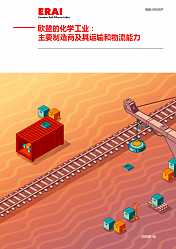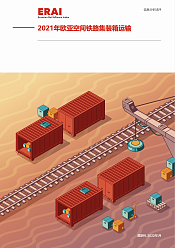The key challenge for policy makers and industry over the coming five years revolves around the decarbonisation of transport. The transport sector currently accounts for 27% of Europe’s total greenhouse gas emissions. Emissions from transport have increased 26% since 1990 and the transport industry is subsequently currently lagging behind other sectors of society in its attempts to get greenhouse gas emissions under control. As part of the Green deal, the European Union has set the objective of being climate neutral by 2050. This is not possible unless we radically rethink how European transport chains operate.
Freight transport is no exception in this regard. Despite numerous attempts by legislators to achieve modal shift, European freight transport remains predominately on our roads. Road freight accounts for 76.7% of all of Europe’s inland freight transportation. Decarbonisation of road transport will play a critical role in reducing transport emissions, but it cannot achieve substantial emissions savings alone. Modal shift to more energy efficient modes of transport such as rail freight is crucial.
Moving freight by rail is four times more energy and fuel efficient than moving freight by road. Without any further innovation, significant emission savings can be made by simply moving goods from road to freight.
Assuming that all modes can be moved away from fossil fuels, it is crucial that we also reduce the energy needs of the transport sector. Green energy will remain a finite resource in the short term and it is essential that the demands of the transport sector are minimised as much as possible. The challenge of transport is therefore twofold, to remove fossil fuels and to minimise energy needs.
It has to be accepted that goods will not just move to rail purely out of the need to reduce greenhouse gas emissions. Rail freight needs to improve its service offer and reliability in order to attract freight. The industry simply pointing to rails good environmental performance is therefore not enough.
For modal shift to rail to happen, it is crucial that Europe’s railway systems move away from national silos and into a truly, integrated European network which takes into consideration the needs of rail freight. Freight transport is international by nature and it is crucial that Europe’s rail infrastructure reflects this reality.
Rail freight needs to have sufficient rights and capacity in order to offer a service that customers want and to be able to grow. The rail freight industry is aiming towards having 30% of inland freight transport carried by rail by 2030. This is not possible under existing capacity allocations.
National governments need to continue to promote competition and open access. Competition is an essential prerequisite to innovation. The need to grow the rail freight sector should not be used as an excuse to revert back to national governments supporting single operators. More than ever, more competition and open access is needed in the rail freight sector.
Once these points have been addressed, rail freight will be in a strong position to grow and to play an important role in Europe achieving climate neutrality by 2050.




